Another blow was dealt to deep space exploration this past weekend. The announcement comes from Jim Green, NASA’s Planetary Science Division Director. The statement outlines some key changes in NASA’s radioisotope program, and will have implications for the future exploration of the outer solar system.
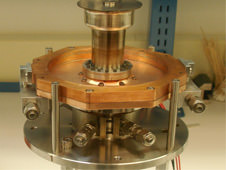
We’ve written about the impending plutonium shortage and what it means for the future of spaceflight, as well as the recent restart of plutonium production. NASA is the only space agency that has conducted missions to the outer planets — even the European Space Agency’s Huygens lander had to hitch a ride with Cassini to get to Titan — and plutonium made this exploration possible.
Probably the most troubling aspect of the announcement is the discontinuation of procurement by NASA of flight hardware for what was to be NASA’s next generation nuclear power-source for exploration, the Advanced Stirling Radioisotope Generator, or ASRG. This was to replace the Multi-Mission Radioisotope Generator, or MMRTG that has been in use on spacecraft for decades.
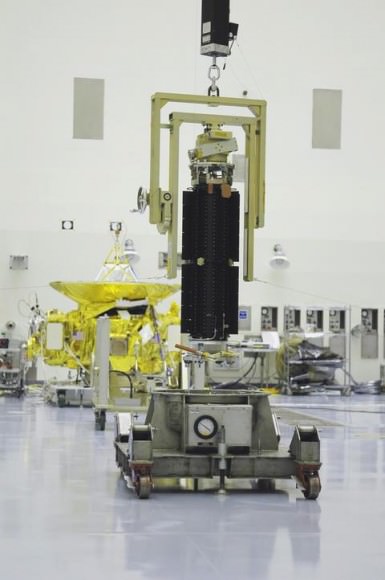
The announcement states:
“With an adequate supply of Pu-238… NASA has decided to discontinue procurement of ASRG flight hardware. We have given direction to the Department of Energy… to end work on the flight units. The hardware procured under this activity will be transferred to the Glenn Research Center to continue development and testing of the Stirling technology.”
The announcement cites the current budget-constrained environment that NASA and planetary space exploration finds itself up against. What the exact future role is of NASA Glenn beyond basic research and development isn’t entirely clear, but two ASRG units that were to be flight-ready for missions in 2016 are shelved for now. The announcement does mention that NASA will continue to utilize flight-proven MMRTG’s in the near term, which provide the same approximate power output as the ASRG, albeit with less efficiency.
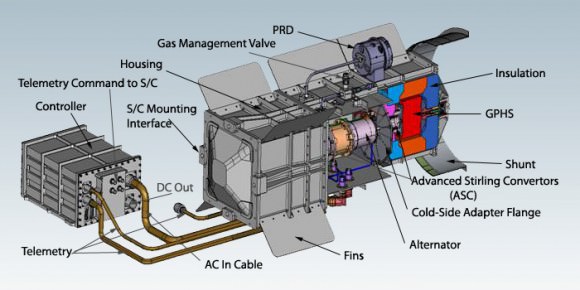
Plutonium is vital for outer solar system exploration. As you get farther away from the Sun, solar energy ceases to become a viable alternative power source. Pioneers 10 & 11, Voyagers 1 & 2, Galileo, and Cassini all utilized nuclear RTGs, as does the Mars Curiosity rover and New Horizons mission headed out explore Pluto in during its July 2015 flyby. NASA’s Juno spacecraft scheduled to reach Jupiter in 2016 will be the first-ever mission without an RTG to explore the outer solar system, and it must employ three enormous solar panels to do so.

And although the production of the Pu-238 isotope used in space exploration was a side-benefit of the Cold War, it isn’t the same stuff as its isotopic cousin Pu-239, which is used in nuclear weapons. Plutonium production in the United States ceased in 1989, and although the U.S. government announced earlier this year that NASA will restart the plutonium production pipeline for space exploration, production levels are only expected to reach 1 to 1.5 kilograms per year.
Casey Dreier of the Planetary Society notes in a recent post that:
“The New Horizons mission to Pluto used about 11kg (of Pu-238), which would take anywhere from 7-11 years to generate under the current plan… missions with bigger budgets that could afford regular RTG’s will be bottlenecked by the production rate of plutonium to maybe once or twice per decade.”
The development of the new ASRG system was to take advantage of NASA and the Department of Energy’s remaining supply of plutonium, the exact amount of which is classified but is thought to be enough for perhaps one large Mars Science Laboratory-style mission. (Fun fact: the Pu-238 powering Curiosity was bought from the Russians).
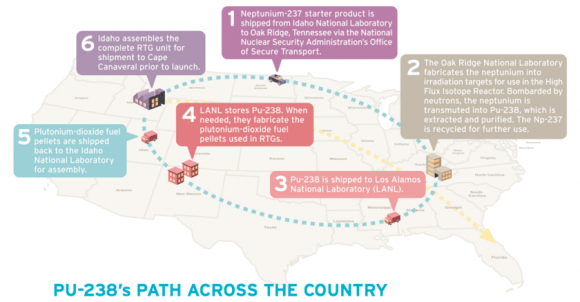
Dr. Stephen Mackwell of the Lunar & Planetary Institute told Universe Today that:
“The ASRG units use around 1.2 kg of Pu-238, while the MMRTG units use around 4.8 kg, both generating around 140 & 125 Watts (at the) beginning of life, respectively. The half-life of Pu-238 is 87.7 years, so the design lifetime can be 14+ years with no problem.”
This means that you can get the same output in energy from an ASRG unit using a quarter the amount of plutonium, a much more efficient system than the old MMRTGs. That also would’ve meant more plutonium to go around for multiple proposed Discovery-class missions, which are missions in the cost range of less than $425 million dollars US.
This definitely spells bad news for any proposed future missions to the outer solar system, such as a dedicated Europa flagship mission or a possible Titan Lakes lander. The proposed Mars 2020 rover which is based on the Curiosity design is probably safe, but may utilize much of what little Pu-238 we’ve managed to produce at that point.
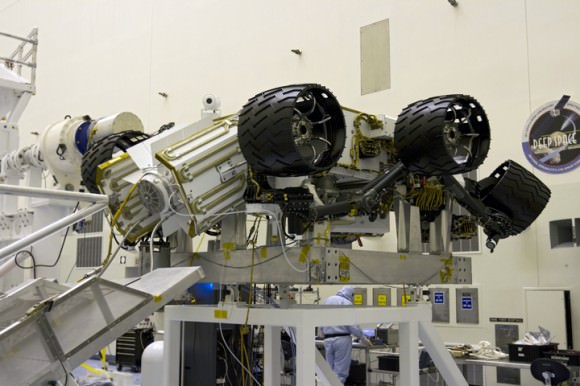
This may well be the harbinger of things to come, a grim state of outer solar system exploration in the next decade where our “eyes on the outer planets” go dark, one by one. As science journalist Elizabeth Howell noted in an article on Universe Today just yesterday, NASA may be forced to pull the plug on Cassini in the coming year due to budget cuts. It’s troubling to think that we’re even talking about shutting down a perfectly functioning spacecraft solely due to budget constraints. Plutonium-powered missions give us an enormous bang for the buck: for example, Voyager 2 just passed its 35th anniversary in space last year, and missions such as New Horizons headed outbound from our solar system may well do the same.
But it doesn’t have to be this way. Be sure to drop your Congressional representative and the President a line via the Planetary Society’s website and let them know that you care about the future of space exploration!
Note: The announcement by Mr. Green alludes to a further discussion and clarification of what the stoppage of production for flight-ready ASRGs means at the Assessment Group meetings at the American Geophysical Union Fall Meeting, to be held on December 9th through the 13th. More to come!

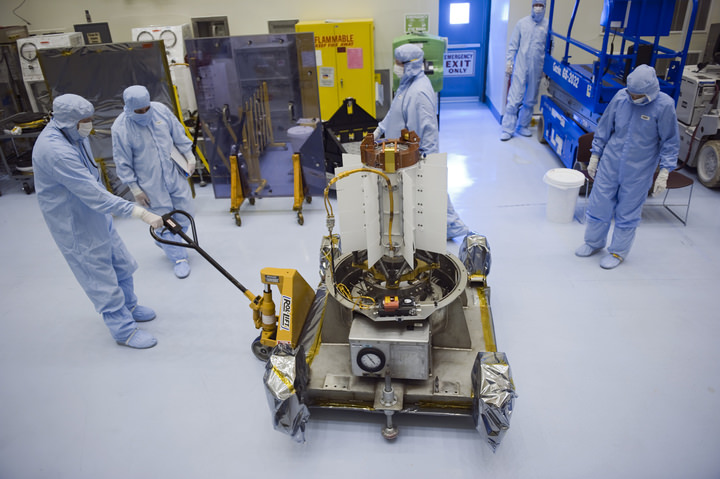
Buying Pu-238 from Russia should be no Fun-fact, but something normal. I am sure the French could also supply Plutonium, they have sophisticated plants for reactor burned fuel recycling.
Take all the money we have been spending on needless war, and put it into NASA, problem would be solved.
My problem with the Sterling Cycle is the moving parts. How many gyroscopes have had to be replaced on the Hubble Space Telescopes over the years or the failure of 2 of the 4 reaction wheels on Kepler in a relatively short time. What’s the chances of this working for over 30 years like on the Voyagers?
Excellent point. My enthusiasm for the tech diminished when I realized this a couple months ago. Lubrication in a space environment is far more problematic than here on Earth. Kepler failed even with redundancy.
I had the same reaction when I watched the video provided here. The Stirlings are slick, and they have few moving parts, it is true; but they move like a bat outa hell. Perhaps this is why the program was abandoned although I did see the work on ASC is continuing.
I used to be a proponent of using this stuff for deep space missions. Then I looked into how it is manufactured and the inherent dangers and by-products therein. With a half life of some 24,000 years and considering that milligrams can cause cancers in humans, and the fact that it is only _one_ of the the nasty by-products of nuclear power plants and/or nuclear weapons manufacture.. my opinion has slowly changed. Do I trust those power utilities who make obscene profits by promoting the use of nuclear power and who build their nuclear power plants by using contractors who offer lowest bid? Or, do I trust those who have constructed tens of thousands of nuclear weapons – enough to extinguish all life on this planet many times over – in actions done for profit’s sake? Forget about patriotism. You know and I know that it’s all about profit. That’s like asking, do I trust Wall Street to handle my retirement funds…. What do you think? Dzzzz…. No really, I like children and want to see them grow up without extra eyes, fingers or gills. Signed – Used to be a proponent of nuclear energy.
Two RTG’s have crashed from space into the ocean. One was fished up from the ocean floor and reused in a new spacecraft! They are indestructable. Don’t worry.
You missed my point entirely. It’s not that the RTG’s are the problem, it’s the original MANUFACTURE of the Plutonium that is the problem.
The problem with manufacturing it is the costs. It’s very small quantities. If you know about people getting hurt by working with it, then I think you have found a scoop. Myself I would suppose that they are proud of their jobs and grateful for it supporting their lifes.
And profit is good. Profit is the difference between the value of what is used up and the value of what is produced. Survival is impossible without productive work, without profit. RTG production is profitable because it is good.
Solid stuff indeed
Report of the U.S. General Accounting Office describes the event as follows: “In 1968, a NIMBUS-B-1 weather satellite was destroyed after its launch vehicle malfunctioned. The plutonium fuel cells from the spacecraft’s two RTGs were recovered intact from the bottom of the Santa Barbara Channel near the California coast.” [USGOA, page 18] The plutonium from the RTGs was recycled and re-used for another RTG.
Where to start?
The half-life of PU238 is actually closer to 90 years, as stated above in the article. If it were 24K years, as you incorrectly assert, Voyager would be in much better health.
As to the ‘obscene profits’ of utility companies: perhaps you are thinking of oil companies. Power companies are among some of the most regulated industries, and rightly so, and while a profit is earned, it’s not as large as perhaps you think (http://ycharts.com/sectors/Utilities/profit_margin,revenues).
Utilities did go a bit crazy when they were deregulated, resulting in higher prices in a few states like California or Montana or a handful of other states. If you live in one of these states, I understand your POV. I suggest you be careful who you vote for.
Oh. And as to the notion that using the lowest bidder might somehow compromise quality, I would point out that this why specifications and testing are part of any construction project. The techniques used by the construction industry to assure compliance are well-tested and robust.
You are correct about the half life of of Pu-238 being ~90 years. My bad… I transposed with Pu-239, which does have a half life of 24K years. STILL the manufacture of these products from spent fuel rods is a dangerous business. Pu-238 is produced by bombarding neptunium-237 or by the irradiation of americium in a reactor. In both cases chemical treatments are used to extract the product, including dissolution in nitric acid. DON’T DROP THAT FLASK!
And yes.. I live in California.
It is PU-238 not PU-239.
http://en.wikipedia.org/wiki/Plutonium-238
PU-238 has only a half life of 87.7 years.
Also realize that a longer half life actually means safer. The same amount with a half life of 1000 years produces 1000 times less radioactivity than one with a half life of 1 year.
Also half life means nothing. It all depends on the initial mass not the half life. .
They could obviously save a lot of money in the Pu-238 production by putting it all in one place, instead of constantly shipping materials around in high security transports. Of course, I know that won’t happen, every state has to get their pork. But if they were actually interested in cost effectiveness…
Your last photo caption is incorrect. Curiosity uses one MMRTG, not “twin.”
It’s my space site gleaning that Juno was NASA’s early “green
friendly/peace” pitch to garner more favorable public opinion and
funding by powering it via (“green”) solar power than evil old
plutonium. A lot of engineers and researchers were very upset by the
decision to go the power-starved limited-package solar route back then.
James Greenidge
Thanks ansnuclearcafe.org
One has to wonder how much Pu-238 was wasted in clandestine monitoring devices that the US dropped all around thee world? Anyone have any idea how many ks went into those spy devices. Pu-238 was produced at the Savannah River Site here in South Carolina, where about 36 MT of weapons-grade Pu-239 was produced. The processing of those materials in the reprocessing plants has left behind a monumental high-level nuclear mess that is still being dealt with. Building 235-F at SRS, where Pu-238 was handled but it’s now closed, remains one of the most dangerous buildings on the site. Under certain seismic and fire situations could contaminate a wide swath of SRS. But money for the building’s clean up is “lacking” in the DOE budget. See this March 2013 DOE presentation to the SRS Citizens Advisory Board on 235-F: http://www.srs.gov/general/outreach/srs-cab/library/meetings/2013/fb/03wheeler.pdf